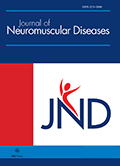Authors: Welland, Natasha Lervaag | Hæstad, Helge | Fossmo, Hanne Ludt | Giltvedt, Kaja | Ørstavik, Kristin | Nordstrøm, Marianne
Article Type:
Review Article
Abstract:
Background: Primary periodic paralysis (PPP) are rare inherited neuromuscular disorders including Hypokalemic periodic paralysis (HypoPP), Hyperkalemic periodic paralysis (HyperPP) and Andersen-Tawil syndrome (ATS) characterised by attacks of weakness or paralysis of skeletal muscles. Limited effective pharmacological treatments are available, and avoidance of lifestyle related triggers seems important. Objective: Our aim was to search and assess the scientific literature for information on trigger factors related to nutrition and physical activity in PPP. Methods: We searched Ovid Medline and Embase database for scientific papers published between January 1, 1990, to January 31, 2020. Results: We did
…not identify published observation or intervention studies evaluating effect of lifestyle changes on attacks. Current knowledge is based on case-reports, expert opinions, and retrospective case studies with inadequate methods for description of nutrition and physical activity. In HypoPP, high carbohydrate and salt intake, over-eating, alcohol, dehydration, hard physical activity, and rest after exercise are frequently reported triggers. Regarding HyperPP, fasting, intake of potassium, alcohol, cold foods or beverages, physical activity, and rest after exercise are frequently reported triggers. No nutrition related triggers are reported regarding ATS, exercise can however induce ventricular arrhythmias. Conclusions: Our results support that dietary intake and physical activity may play a role in causing paralytic attacks in PPP, although the current scientific evidence is weak. To provide good evidence-based patient care, several lifestyle aspects need to be further assessed and described.
Show more
Keywords: Primary periodic paralysis, Hypokalemic periodic paralysis, Hyperkalemic periodic paralysis, Anderson-Tawil syndrome, dietary intake, physical activity
DOI: 10.3233/JND-200604
Citation: Journal of Neuromuscular Diseases,
vol. 8, no. 4, pp. 457-468, 2021





